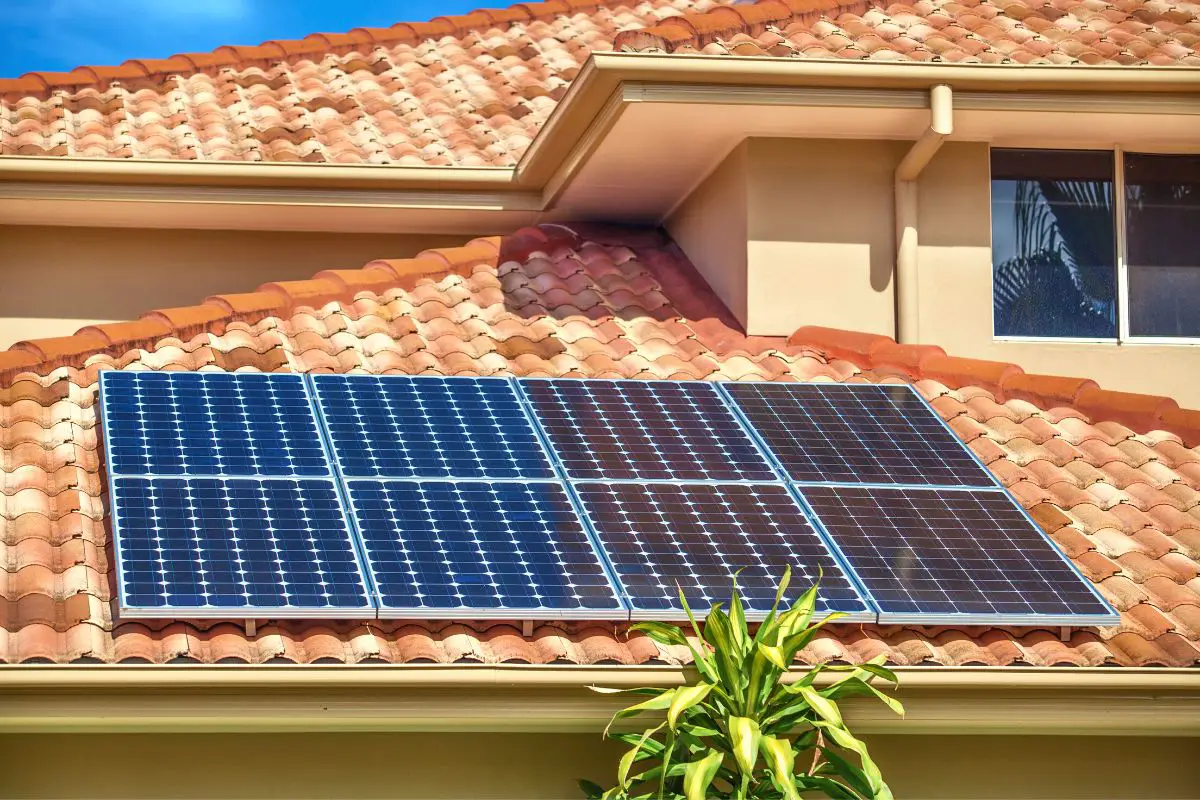Best Roof Type for Solar Panels: Your Questions Answered!
When installing solar panels in our homes, the first location that comes to mind is the roof. After all, most of us do not have enough open space to set up ground-mounted solar panels anyway, do we?
That brings us to the question of what type of roof is best for solar panels.
To be honest, unless you customize it, finding the perfect roof for solar panels is almost impossible. However, no matter the pitch or design of your roof, setting up solar panels on it should be possible.
The point is, with a variety of roofing styles and materials available, it is crucial to understand the subject of choosing the best roof for solar panels.
How to Determine the Best Roof Direction and Angle for Solar Panels
We have a separate article on this, but some specifics are needed here as well.
Get this: solar panels will generate power as long as the photon particles strike their surface. However, the intensity of the particles striking the surface decides the amount of power generated. This is where panel orientation and angle come into play.
To start with, let’s understand the difference between solar panel orientation and angle. The angle is the vertical tilt of the panel. A panel lying on the ground has a zero-degree vertical tilt. On the other hand, orientation is the direction it is facing to receive the maximum solar energy.
Ideally, panels in the northern hemisphere should face the true south. In the southern hemisphere, the best roof orientation for solar panels is true north.

Actually, orientation has a bigger impact on power production than panel tilt. Some estimates suggest that panels facing east or west can generate 20% less electricity. You may get the tilt angle right, but if your roof is not facing the right direction, the power output will drop.
But don’t lose heart if your roof orientation is towards the west. Surprisingly, one research based on data collected from Austin, Texas, suggests that west-facing panels produce more electricity than south-facing ones. The difference is even greater during peak demand hours.
Considering the inherent tilt and orbit pattern of the Earth, the sun’s movement will vary depending on specific locations. That means the best roof angle for solar panels will also change depending on your location.
Then again, the panel angle will depend on the season as the sun’s path changes. Generally, the tilt angles are steeper in winter and lower in summer. The best way to compensate for that is to install a solar tracking system. But solar trackers are expensive and mostly used for commercial systems
Another common question: what is the best roof angle for solar panels?
Getting the tilt angle right is a must for maximum output. In most cases, the optimum tilt angle is between 30 degrees and 45 degrees – which is also the best roof angle for solar panels.
On such roofs, the panels are usually flushed to the roof surface. However, the safety of the contractors while working on a steeply sloped roof is a concern.
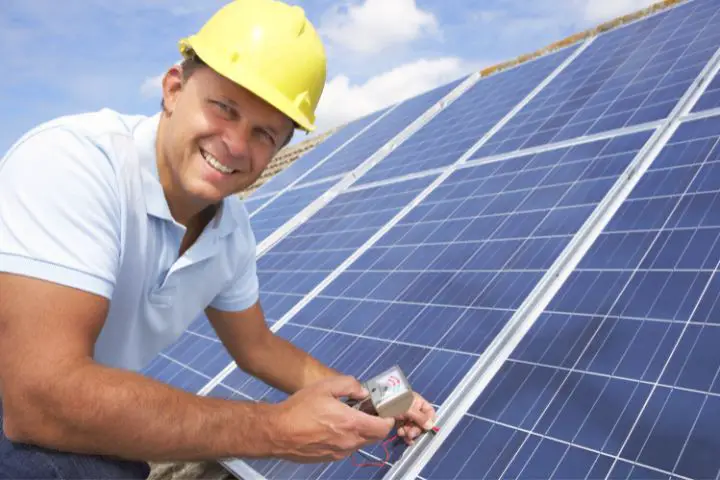
For low-angle and flat roofs, you may need to use racking systems to tilt the panels at an optimal angle. The downside is, tilting the panels will lead to inter-panel shading. To overcome this, the panels need to be spread out or staggered. Since this will need more space, the number of panels will be reduced.
Now, things can get confusing when you consider roof pitch instead of roof angle. Quite simply, this is another way of expressing the roof angle.
Rise is the vertical distance between a point on the roof to its highest point. The run is the horizontal measurement from the roof peak to the exterior wall. By dividing the rise by the run, you arrive at the roof pitch fraction.
For example, a 7:12 roof pitch indicates that for every 12” vertical distance or run, the roof height will rise by 7”. This also means the roof angle is 30.26 degrees. A 12:12 pitch indicates a steep 45-degree roof angle.
If you take the help of the Global Solar Atlas, you will find the optimal tilt angle for panels in every corner of the world. The other option is to use free online calculators that determine the best solar angle based on your zip code.
In a discussion with CNET, John Burke, the Director of Maine Solar Energy Association mentions, “In the United States, it’s simple. Forty-five degrees usually works. If you’re further south or north you might want to adjust the angle a little bit. The rule of thumb is latitude, plus or minus 5 degrees.”
In high-latitude states like Washington and North Dakota, you need roof angles close to 45 degrees or steeper roofs. In low-latitude states like Arizona, Arkansas, and Hawaii the panel angle should be around 20 degrees.
Once you understand the best orientation and angle needed, it gets easier to determine if you have the best roof pitch for panel installation. If your roof is not facing the right direction, you may need more space and additional panels to hit the desired output.
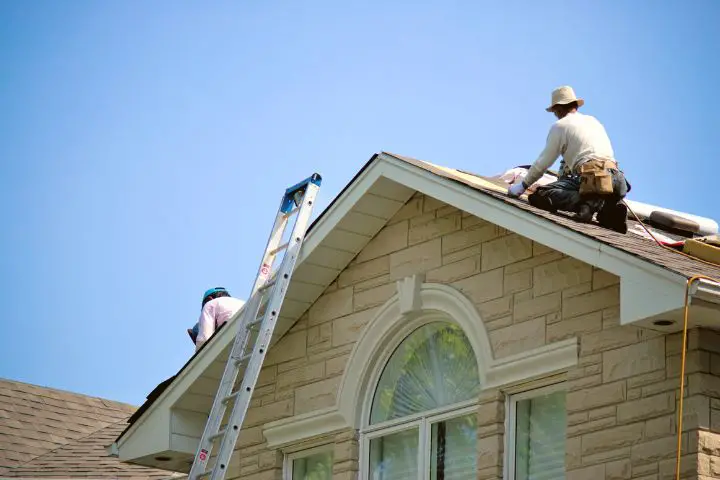
What’s the Best Roof Design for Solar Panels?
Solar panels can be set up on almost all types of roofs unless there are zoning regulations or restrictions related to a historic property. However, upgrading an old roof for solar panel installation can be expensive. In the case of new buildings, architects should consider designing the roof to accommodate future PV installations.
But hang on a minute. Before you set up solar panels on a roof, there are a few things to consider.
It is essential to estimate the increased load on the roof structure due to the panels. Not to forget, the solar panel array can trap wind from below and act as a sail, increasing the uplift load on the roof. Moreover, the panels can also increase the snow load on the roof.
The actual roof loading also depends on whether the solar panels are a ballasted or unballasted system. In ballasted systems, the panels are held down by dead loads like concrete blocks. Unballasted systems use a mechanical fixing arrangement that connects with the roof structure.
Your roof’s structure is like a skeleton: it’s not immediately obvious, but it holds the whole body together. That’s why installing the panels on a structurally weak roof can lead to strength and stability failures in the roof. That, in turn, will affect the wall’s stability and can lead to the failure of the structural connections.
Most US states follow the recommendations mentioned in the International Building Code (IBC) and International Residential Code (IRC) for designing roofs with solar panels. In some states, local amendments have been added for an extra layer of safety.
It is best to take the help of a structural consultant to understand the exact implications of roof-mounted panels. Go for a detailed structural review, taking into consideration the rainfall, snow, and wind patterns in the area. The consultant can also undertake a truss integrity inspection to determine the loading capacity of the roof.

If needed, you can have your roof structurally reinforced to increase its load-bearing capacity. This can be done by reinforcing the existing beams, or by adding joists to the existing structure.
By now you might be wondering about the minimum roof space needed for setting up solar panels.
In fact, there aren’t any space limitations. You can set up solar panels on any roof. However, the roof area will determine the number of panels you can use and the power output.
According to Forbes, the average size of a 60-cell solar panel is 17.62 square feet. To cover 100% of their power usage, an average home needs between 17 and 21 solar panels that will produce between 4 and 6kW of power. So, you will need around 350 square feet of roof space to generate around 6 kW of power.
That said, the actual output will also depend on other factors like panel wattage and production ratio. The best idea is to look back at your energy usage for the past six months and determine the panel capacity you need. Then, compare it with your roof space, orientation, and location to estimate the best output you can get.
The Best Type of Roof for Solar Panels – What Works and What Doesn’t
Since a solar panel array can last for 25 years or more, you need a roofing material that will last as long. Before installing solar panels, you not only need to check the roof structure but also its present surface condition. If your roof is older than 5-8 years, it’s best to get it professionally evaluated before installing panels.
Keep in mind that solar tracking systems will need roof penetration, which may void any roof warranties. On the plus side, the panels can protect the roof from the weather elements and make it last longer.
1. Shingle Roofs
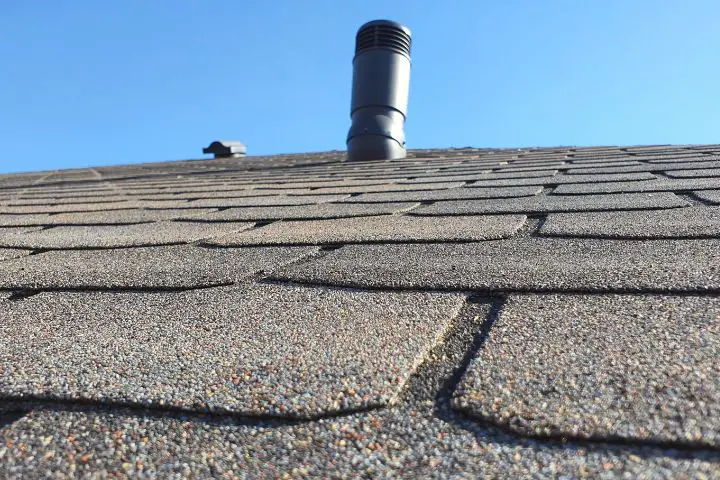
Composite shingle roofs are a popular choice as they are affordable and last long. Asphalt shingle roofs usually last for 15 to 30 years and repairing them is also an inexpensive process.
Attaching solar panels to asphalt shingle roofs is easy by using standard penetrating bolts and flashing. One thing is, you need to use a top-grade sealant to prevent water seepage through the mountings.
Otherwise, you may use the latest technology. Check out solar shingles – tiny solar panels integrated into an asphalt roof.
2. Metal Standing Seam
If you ask me, metal panels are the best roof material for solar panels. Metal standing seam roofs are used in many modern buildings due to their sleek and clean look. Since these types of roofs can last for 30 years, they offer a stable and long-lasting base for the panels.
The fixing arrangement for the solar panels depends on the roof panel profile type, but the process is simple. A special U-clamp is bolted to the raised seam and the panels are secured to it. Easy installation also means lower costs.
3. Tar and Gravel Roofs
Tar and gravel roofing is mostly found on flat roofs and consists of asphalt and rubber layers with an additional layer of gravel on the top. While it can last as long as 30 years, this roofing arrangement is heavy. So, you need to do a load analysis before adding solar panels on this roof type. That makes the process a more complex affair than metal or shingle roofs.
In general, ballasts or non-penetrating anchors are used to fix the panel frames to the roof. Considering the roof is flat, you might need additional hardware for optimum panel orientation. On the plus side, better orientation can lead to more power generation and long-term savings.

4. Tile Roofs
With tiling, you get a wide range of options including concrete, stone, ceramic, composite, etc. The advantage of tile roofing is they are super durable even in extreme climates and salty conditions. Good quality tiles will easily outlast your solar array even if the roofing was done 15-20 years ago.
But here’s the problem. Installing panel support frames on tiles by using brackets is a tricky business as most tiles are fragile and prone to breakage. The best option is to get support from an experienced solar installer. But then, be prepared to spend more on the extra skill set.
Thanks to advanced solar panel designs, you can use solar roof tiles to avoid this problem. In fact, Tesla has launched both glass and steel tiles that provide high performance and longevity.
6. Concrete & Rubber Roofs
Installation of solar panels on concrete and rubber roofs is done by using a ballast system or a weighted rack. Since penetration mounting isn’t used, the process is simple, affordable, and requires no drilling. In case drilling needs to be done, the holes are closed by sealants to ensure waterproofing.
However, ballast systems for fixing PV arrays are not suitable for roofs with insulation. In such cases, a bonded or mechanically fixed installation is done.
5. Wood
While wooden roofs are classy and stylish, they are not the best type of roof for solar panels. The reason is, wood is a delicate material and the fixing of anchors can cause damage. If the panels are fixed by ballasts, the extra weight can be an issue. Also, with wood, there are fire safety concerns.
Then again, older wooden roofs can be prone to weathering which can lead to rot. So, they might not last as long as the solar panels.
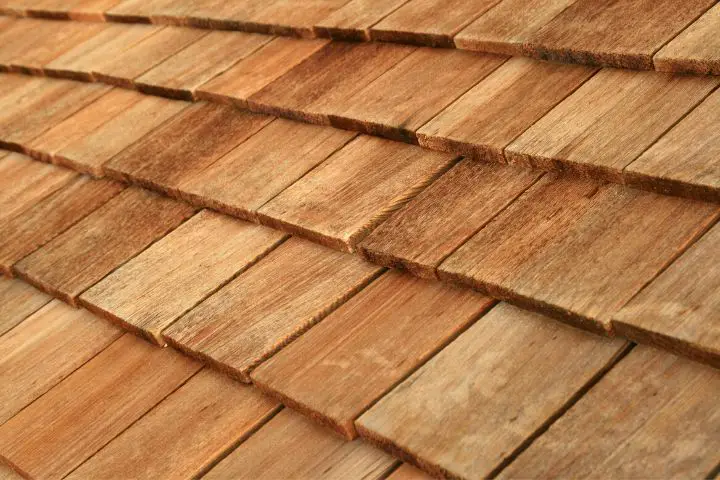
The Best Roof Color for Solar Panels
When it comes to choosing the best roof color for solar panels, go with lighter options. Technically, this can be explained by using the albedo effect, which states that darker colors reflect zero or minimum solar energy. A white roof is more energy efficient in hot climates as it absorbs less heat and reduces the need for cooling.
As you know, when the ambient temperature of the solar panels is lower, they will perform better. So, a cool roof is a better option for higher panel efficiency. Using white as the roof color will result in less heating of the roof.
On the other hand, darker colors will absorb more solar radiation and get hot faster. The temperature of a pitch-black asphalt shingle roof can be 10 to 15 degrees higher than a white roof on a hot sunny day. However, when you are in a location where the weather remains cold all through the year, a black roof can make sense.
In fact, bifacial or two-sided panels can generate electricity from both sides and can make use of the reflected sunlight from lighter colors.
The best color options for an energy-efficient roof are white, beige, cream, and off-white. Khaki and sand colors also reflect heat. On the other hand, silver and light blue shades are not as good reflectors of heat as beige and white.
Common Roof Issues After Solar Panel Installation
Are all roof installations of PV panels successful?
Not really, no. Many homeowners have faced post-installation issues related to multiple factors. Let’s take a closer look at these issues and their causes to prevent them from happening.
1. Structural Issues
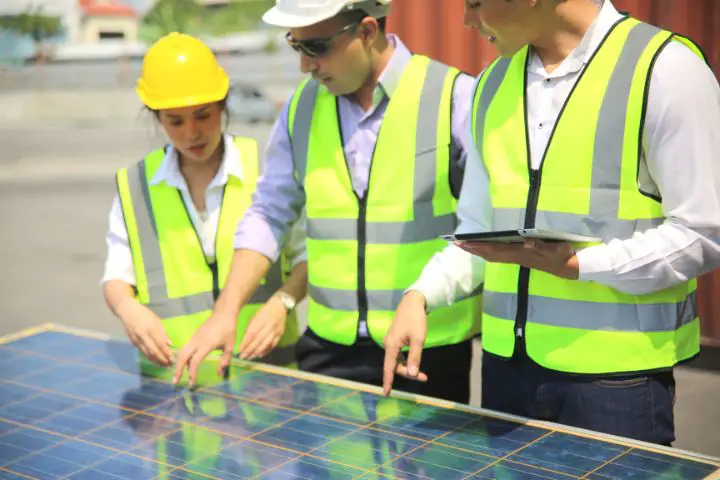
Some homeowners do not involve design professionals in the structural analysis of the roof before installing the solar panels. The condition of the roof before installation is also neglected by some owners. In some cases, this caused the sagging or cracking of the roof rafters due to the extra load in the future. Quite simply, setting up solar panels on an old roof is not a DIY task.
2. Lack of Coordination
The design of the panels along with the analysis of the building structure needs the involvement of multiple engineers. At times, there remains confusion about the scope of work of these engineers, resulting in the neglect of some design aspects.
For example, an engineer designing the panel fixing attachment may not consult with the engineer responsible for analyzing the roof structure. This lack of understanding can result in structural issues and improper fixing of the panels.
3. Leakage
In a typical tiled roof, the rainwater flows freely over the tiles into the gutter and the drainage spout. However, the panel support structure can obstruct the water flow and cause water to collect over the roof. In the long run, this can lead to dampness and seepage.
It is necessary for the panel installer to consider the water flow on the roof during the installation. Necessary modifications should be made to the layout and panel supports to prevent waterlogging on the roof.

4. Inadequate Wind Loading
It is not so uncommon to find PV panels on a tall building blowing away after a snowstorm. This can happen even when the wind loads are below the values considered during design.
Now, such cases may not be due to a design fault. More often than not, the panel spacing is kept too large for the anchoring or ballast system to hold the panels down during heavy winds. Matching the wind loads with the latest ballast weights and panel layouts is an important task for the solar installer team.
Conclusion
Hope this article answers the question of what roof is best for solar panels.
While the roof is not the only place where you can install solar panels, it is the most popular choice. That makes it important to learn about the best roof options for solar panels on an existing building and make an informed decision.
Truth is, hardly any roof is perfect for optimum solar power generation unless they are customized for it. To make the best use of your roof, consult a certified professional who can ensure a safe and optimized solar array installation.

